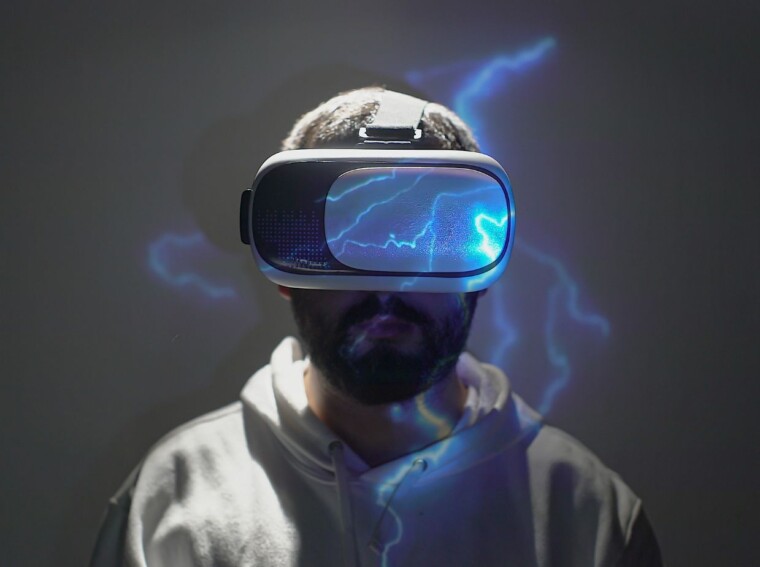The digital realm is evolving at an exponential rate, and at the heart of this transformation lies the 4K VR headset. This advanced piece of technology promises to redefine the boundaries of immersion, offering users an experience that is both incredibly lifelike and deeply engaging. But how exactly does a 4K VR headset elevate digital exploration? Let’s delve deeper.
To begin, comprehending the relevance of 4K resolution is critical. Traditional HD resolution of 1920×1080 pixels was originally thought to be the gold standard for digital screens. However, 4K, with its outstanding 3840×2160 pixel resolution, gives four times the visual clarity. According to Display Daily, this unprecedented resolution brings out precise details, vibrant colors, and strong contrasts, which are especially important when entering virtual realities.
In a virtual reality game, imagine yourself standing on the edge of a precipice. Every pebble, blade of grass, and even far horizon come to life with amazing clarity when viewed via a 4K VR headset. Such realism has a significant impact on how people engage with and respond to the virtual environment. According to a University of Minnesota study, greater resolutions can significantly minimize motion nausea in VR, which is a prevalent issue for many users.
This resolution increases benefits more than just the gaming industry. 4K VR is becoming a vital tool for educators and trainers. The clarity provided by the 4K resolution ensures that no detail is overlooked while modeling medical operations, instructing pilots, or illustrating complicated scientific processes. In industries where precision and attention to detail are critical, 4K VR is more than a luxury; it’s a requirement.

Naturally, enormous power comes with great responsibility. When creating content for the 4K VR headset, developers must optimize their designs for greater resolutions without sacrificing efficiency. According to VR World, generating content for 4K requires striking a balance between spectacular images and ensuring that programs work smoothly and without lags or stutters. Given the processing power necessary for 4K, gear manufacturers, and software developers must collaborate to ensure a smooth experience.
The 4K VR headset emerges as a cornerstone in our view of the future of digital immersion. This gadget has the potential to reshape our interactions with virtual surroundings, bringing them closer to reality than ever before. The journey is not without its difficulties. The sector has various challenges, ranging from guaranteeing seamless experiences to preserving high-resolution pictures. Nonetheless, the momentum is undeniable. Because of advancements in data compression, large volumes of information can now be delivered quickly, ensuring real-time interactions. These developments, when combined with advancements in Graphics Processing Units (GPUs) and simpler coding processes, herald a new era for VR. The goal is clear: to create experiences that are so vivid and lifelike that the lines between our reality and the virtual world are nearly indistinguishable.
Beyond gaming and professional training, the entertainment sector is eager to capitalize on the possibilities of 4K VR. Filmmakers and artists see it as a platform for telling stories in a completely immersive way. Consider immersive documentaries or interactive movie experiences, in which spectators are taken directly into the heart of the narrative rather than being passive onlookers. The sharpness of 4K resolution may enthrall spectators, allowing them to experience emotions and sights on a higher level, from minute subtleties in an actor’s expression to huge expanses of cinematic landscapes.
Another fascinating application for 4K VR is social networking. With 4K, virtual social spaces where individuals from all over the world may connect and interact have a greater sense of realism. Consider a virtual meeting or family gathering in which your coworkers’ or loved ones’ avatars imitate real-life characteristics and subtleties. The richness of 4K adds depth to these virtual interactions, making distances feel shorter and virtual encounters feel more authentic.

As we approach the nascent ‘4K VR Era,’ there is palpable enthusiasm about the immense untapped potential of this technology. It’s about more than just better images; it’s about deeper experiences, more authentic interactions, and closing the gap between reality and the digital world. The 4K VR headset is more than simply a device; it’s a portal to an infinite number of possibilities, each more exciting than the previous. One thing is certain as technology advances: immersive digital exploration is only getting started, and 4K VR is leading the way. Thanks to the wonders of 4K VR technology, our voyage into the digital future is primed to be clearer, more colorful, and more immersive than ever before.
